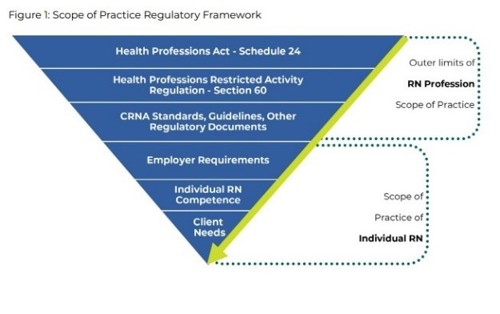Patients and their families require health care services provided in a safe, competent and responsible manner that aligns with regulatory expectations (including the provider practising within their scope of practice).
Within the NPPCP, patients can expect their health care needs to be provided in a similar manner to other providers (i.e. professional services, privacy, continuity of care).
The CRNA is currently developing formal regulatory guidance that addresses the unique role of NPs in the health care system. In the meantime, the FAQs outlined on this page will provide direction to registrants regarding the CRNA’s general expectations.
NPs are regulated by the CRNA, not by the CPSA; however, to ensure patient safety, the CRNA encourages NPs to familiarize themselves with the expectations physicians are held accountable to by the CPSA. The CPSA’s regulatory guidance for physicians can be viewed as expectations NPs are also held accountable to.
If there are questions related to the CPSA’s standards in relation to NP practice, please contact the CRNA, NOT the CPSA.
The CRNA would like to acknowledge the CPSA’s expertise and leadership with the development of their standards of practice which outline very clearly, expectations for the delivery of patient care in an independent practice setting. The CRNA is very appreciative that the CPSA is supportive of referring NPs to their standards of practice.
